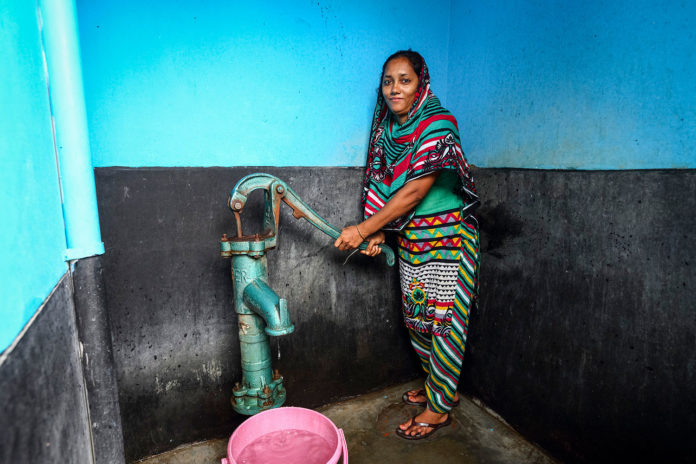Diarrheal diseases remain a leading cause of preventable death, especially among children under five in developing countries. This study highlights a low-cost water treatment device that can potentially provide good-tasting water and avoid the need for behavior change.
The device, developed by an international team of researchers including Stanford epidemiologist Stephen Luby, is dubbed as Aquatabs Flo. It is an electricity-independent technology that could be transformative in scaling up water treatment in slums and reducing child diarrhea, without requiring people to do anything differently when they collect their drinking water.
Working in two poor communities of Dhaka, Bangladesh, the specialists tested this automatic chlorine dispenser for treating water, that works at community pumps instead of home. It works without electricity and automatically doses an exact amount of chlorine into water as it flows through the device. The chlorine lasts long enough to ensure water put away in containers against recontamination.
To avoid bad-tasting water, the researchers polled Dhaka residents to find out how much chlorine could remain in the water without being objectionable. Then, they set the chlorine doses to deliver low levels of chlorine the first few months so people would get used to the taste. Later, they upped that amount to a level that purified the water effectively but remained acceptable taste-wise. The treated water was more than four times less likely to contain E coli., a bacterium that indicates sewage contamination.
The researchers tested the device by having it deliver chlorine in some communities and Vitamin C in others. Out of 1,000 children, the ones who received the chlorinated water had 23 percent lower rates of diarrhea. While the result may seem obvious, previous studies had been ambiguous either because people didn’t consistently use the household chlorination systems being tested or because the studies weren’t able to compare to communities without water treatment.
The device was especially powerful in kids living in an urban setting, which the specialists propose could be because of various causes. One is that water in urban settings frequently spends more time in unpressurized pipes. Likewise, before the chlorine treatment, about 90 percent of taps in that setting were contaminated with E Coli, double the pace of the more rural examination region.
At long last, the two areas contained various pathogens, some of which could be impervious to chlorine. In any case, the outcomes propose that a device that conveys an exact low dose of chlorine can refine water while tasting adequate to drink.
The results were published Aug. 8 in The Lancet Global Health.
